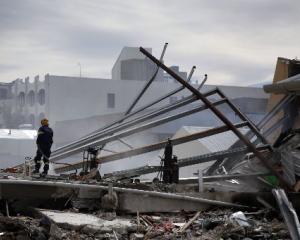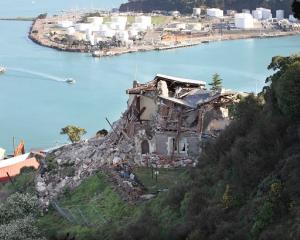It was the event everyone hoped would never happen, coming after the first disastrous earthquake last September when - miraculously no-one was killed or seriously injured and it was possible for Canterbury people to feel a sense of relief, slight though it was, given the damage to houses, buildings, and infrastructure.
It was thought that no earthquake in our developed history may have then caused more damage on a more widespread scale to a larger urban area: our second largest city sprawls not far short of the 40km distant from Cathedral Square to the earthquake's epicentre at Darfield.
The catastrophe in Hawkes Bay in 1931 was the most destructive of life, killing 256 people, and the most destructive, at 7.9 on the Richter scale, largely destroying Napier and Hastings.
Whether severe aftershock or separate earthquake is irrelevant at this stage: the event in the middle of the day yesterday has devastated central Christchurch and parts of its surrounding area, including the town of Lyttelton, has caused loss of life and injured many.
It is a catastrophe at a time when New Zealand is extremely economically vulnerable - as similarly it was at the time of the Hawkes Bay earthquake -and its human impact in terms of personal trauma will be with us for many years.
The event on September 4 last year was measured at 7.1 on the Richter scale, very severely damaged at least 500 buildings and wrecked much underground infrastructure, with the estimated cost of recovery measured in the billions. Most people were in their beds when that earthquake occurred at 4.36am.
Yesterday, most people were out and about at work, at school and at home when the ground shook at 6.3 magnitude at 12.51pm. There have been many aftershocks, some quite severe. Just as Canterbury was beginning to recover, just as people's nerves were beginning to become more settled, this shock has returned to cause more terror.
Buildings can be repaired or replaced, roads resealed, infrastructure returned to normality, but the lasting psychological effects will be the greatest burden for those who are experiencing these events.
It is notable that the region did not previously have the popular reputation for earthquakes as have some other towns and cities, including the capital. No-one should be under any illusion now about our national vulnerability to earth movement or that some regions are less prone to such events than others.
In time, well beyond the urgent needs and assistance over the next few weeks, the crucial issue will arise whether, and how, destroyed buildings in the central city and at Lyttelton should be rebuilt.
Even at this early stage, it is clear many heritage buildings that survived in September have been destroyed and others weakened.
Nor has the devastation been confined to pre-war buildings with some, such as the 1960s-era Pyne Gould office block, collapsing.
The existence of the jointly supported special Act of Parliament that followed the September event to speed up the consent process will obviously have to be extended.
Local bodies and other agencies throughout the country will offer all the technical and logistical assistance required, and no ratepayer will begrudge it.
Although the Civil Defence and emergency services in Christchurch, together with such of the armed forces as were available, responded immediately yesterday, it was clear and remains manifest that more expert help will be needed from other centres over the next few days. Offers of international assistance with rescue crews have been made and accepted.
The Government's response has been prompt and the presence at the earliest opportunity of senior ministers, including the Prime Minister, will have provided assurance to Canterbury residents that they are the nation's priority and will continue to be.
There are early reports of considerable heroism involving people who have been rescued, and doubtless there will be more as the efforts continue.
Everyone in New Zealand, and every New Zealander overseas, will be distressed by yesterday's events, the tragic loss of life, and the extent of injury. There is much that we can individually and practically do over the next days, weeks and months to support the people of Canterbury.
Donations of money is one such course, for although the Red Cross still has more than $9 million left in funds to give to those who were displaced by the September earthquake out of the $22 million donated, clearly more will be needed.
Those in need of calm and recuperation may also appreciate the offer of accommodation for families in the next few weeks.
Our prayers and thoughts of support for all the affected people over the next few days - as they were in September - are a given.






